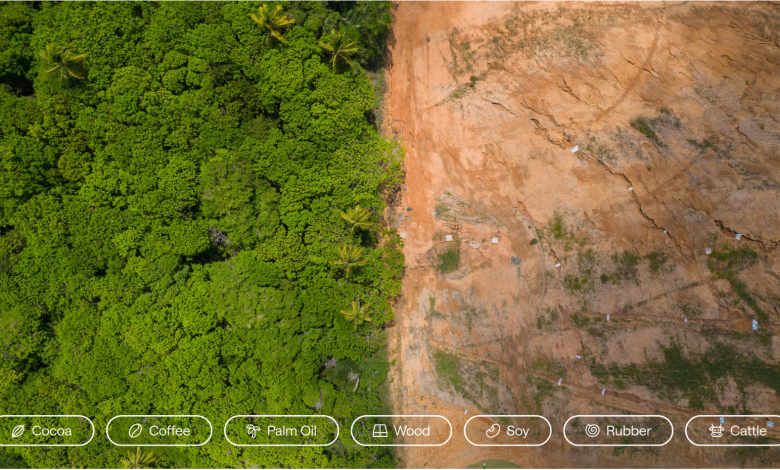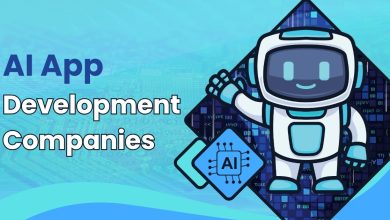
AI is becoming increasingly important in supporting Governance, Risk Management and Compliance (GRC) teams as they face complex regulatory environments. This is due to its versatility in enabling use cases which range from researching historic or future regulations, to advanced adaptive applications that transform fragmented data into actionable compliance information.
New regulations can often put these use cases to the test. One example, with an impact that will be felt by businesses globally, is the European Deforestation Regulation (EUDR). The EUDR represents a globally recognised need for companies to build better systems to monitor and manage risk at the origin of their supply chains, also known as the “first-mile”.
Meeting compliance requirements means proving, with verifiable evidence, that commodities such as cattle, cocoa, soy, palm oil, coffee, rubber or timber have not been linked to deforestation or forest degradation since 2020. This includes derivative products like chocolate or beef. The challenge is that this responsibility begins upstream, where visibility is traditionally weakest.
Businesses can no longer rely on paper records, country risk ratings, or informal supplier assurances. To bridge these blind spots, they need AI-enabled systems that bring clarity, scalability, and defensibility to first-mile data.
Why the first-mile matters
The first mile of a supply chain is where compliance begins, but it is also where information gaps are the widest, particularly among smallholder farms and in regions with weak land records. Traditionally, achieving full visibility in these areas was nearly impossible. That reality is now shifting thanks to advances in satellite imagery, drone technology, and AI-driven analytics. With the EUDR coming into force, these tools are no longer optional but urgent necessities.
Unless an official delay takes place, the current enforcement dates of December 2025 (for large enterprises) and June 2026 (for small or Medium sized businesses) represent more than just compliance deadlines. They serve as pivotal moments for businesses operating in, or exporting to, the European Union. At those dates – or whenever enforcement ultimately begins – companies will still be expected to demonstrate deforestation-free sourcing throughout their supply chain.
Even if enforcement dates are delayed as proposed by Commissioner Jessika Roswall, companies should use this time to strengthen their data capabilities, invest in monitoring technology, and build visibility all the way to the first mile. Delays do not mean expectations are diminishing. Customers, investors, and regulators continue to demand verifiable, transparent supply chain data, and many buyers are tightening disclosure standards even faster than legislation itself. Companies that act now will be better prepared for future enforcement, while also strengthening brand trust, market access, and stakeholder confidence in the interim.
The EUDR signals the start of a new era in business compliance. The regulation is not static, and it will evolve to cover additional commodities and refine key definitions over time. Companies need to anticipate these shifts and build the flexibility to adapt. In doing so, they safeguard not only compliance but also their ability to thrive under future regulatory landscapes. Failure to prepare now increases risks to revenue, future market access and operability, as well as brand reputation.
This is why data accuracy at the first mile is so critical. Without reliable, precise information at the source, companies cannot build a supply chain that is resilient or transparent. The first mile is not just an entry point to compliance, but the foundation on which long-term supply chain integrity depends.
Resilience at scale
Historically businesses only had access to traditional methods when managing risk, but this outdated approach makes verification nearly impossible at scale. With regulatory expectations continuing to rise, businesses now need to provide evidence at the plot-level requiring precise geolocation data, boundaries of production plots, and evidence that no deforestation or forest degradation has occurred since December 2020. By using verified polygons and geolocated datasets, businesses can access reliable proof of the origins of their products. This evidence supports smarter sourcing decisions, stronger compliance, and better risk management.
However, collecting structured data at the first mile isn’t a box ticking exercise and has benefits beyond compliance. It gives companies clearer visibility and more accurate information, so that they can make informed decisions that will improve resilience against future disruptions and trust with stakeholders.
This is more significant where supply chains operate at scale. Manual processes alone aren’t enough as complexity in supply chains increases. Companies that are focused on growing their operations need systems that can scale alongside this. This means they need to tap into advanced monitoring tools and AI technologies that combine human-driven and environmental data.
How AI bridges the data gap
Today, AI is already transforming what’s possible by enhancing satellite monitoring, analysing historical land use, and combining proprietary models. This allows deforestation and land degradation to be assessed with a level of precision, timeline and scale that wasn’t achievable before.
Some of the key capabilities include turning a single coordinate into verified land boundaries, monitoring land use across both time and space, and automated risk classification. AI can also trigger proactive alerts, flagging issues early so that companies can engage with suppliers before shipments are put at risk. These systems also integrate multiple datasets, keep detailed audit trails, and deliver consistent assessments across thousands of plots, allowing for seamless scalability.
With continuous monitoring, businesses gain foresight into both environmental and operational risks. This not only strengthens compliance but also helps future-proof supply chains against shifting regulations.
Readiness is a journey, not a deadline
EUDR compliance means that plot-level visibility is non-negotiable. AI equips companies with what they need to transform compliance from a reactive burden into a proactive strategy for resilience and competitive advantage. The companies that succeed will be those that invest now in defensible, scalable, and adaptive technology that can flex to support current and future challenges.



